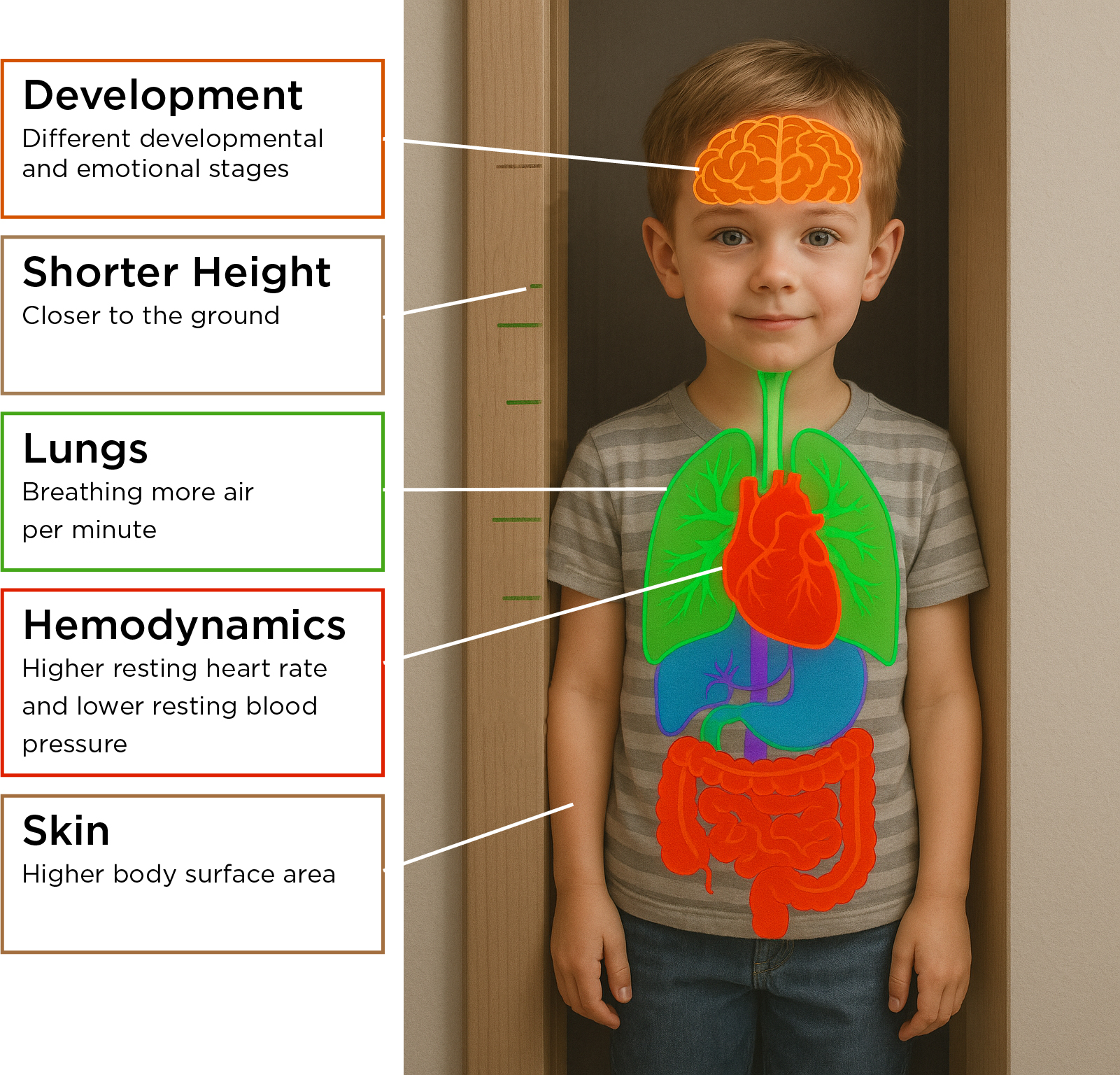Disaster Medicine Handbook: A Quick Reference
Children in Disasters
Children are not small adults. They have unique physical, emotional, and developmental characteristics that make them especially vulnerable during disasters. Unfortunately, they are often overlooked in preparedness planning, drills, and response efforts.
Let’s take a look at some of the things that make them unique.

Body Feature |
Why It Matters in a Disaster |
|
Breathe Faster |
Kids take in more air than adults so they can breathe in harmful gases more easily, especially ones that stay low to the ground. |
|
Shorter Height |
Being closer to the ground means they’re more exposed to harmful substances that sink low. |
|
More skin compared to body size |
Things that touch the skin (like chemicals) can affect them more. They can also get too cold more easily. |
|
Less blood |
Losing even a small amount of blood can be more dangerous for kids than for adults. It’s easier for kids to get dehydrated. |
|
Softer chest and belly muscles |
Their bodies don’t protect their lungs and organs as well. They can get hurt more easily from falls or hits to those areas. |
|
Bigger heads |
Their heads are heavier for their body size, which means they fall head-first more often and can get head injuries. |
|
Different Developmental/Psychosocial Stages |
This feature is pertinent to all aspects of disaster. Kids may be unable to walk or run away from danger. They may be scared of strangers, even those trying to help especially if they are dressed in lots of protective gear. They require short, simple instructions. It may take them longer to understand what they are being told. |
 |
Can you think of any other considerations in caring for children during disasters? |
Why It Matters
Planning for disasters must intentionally account for pediatric needs from medical supplies for all ages and triage tags to psychological support and guidelines for reuniting families. Connect and partner with pediatric experts. Failing to plan for children means putting a significant portion of the population at greater risk during the very moments they are most dependent on adults.
Written by Dennis Ren
Last updated: 5/30/2025